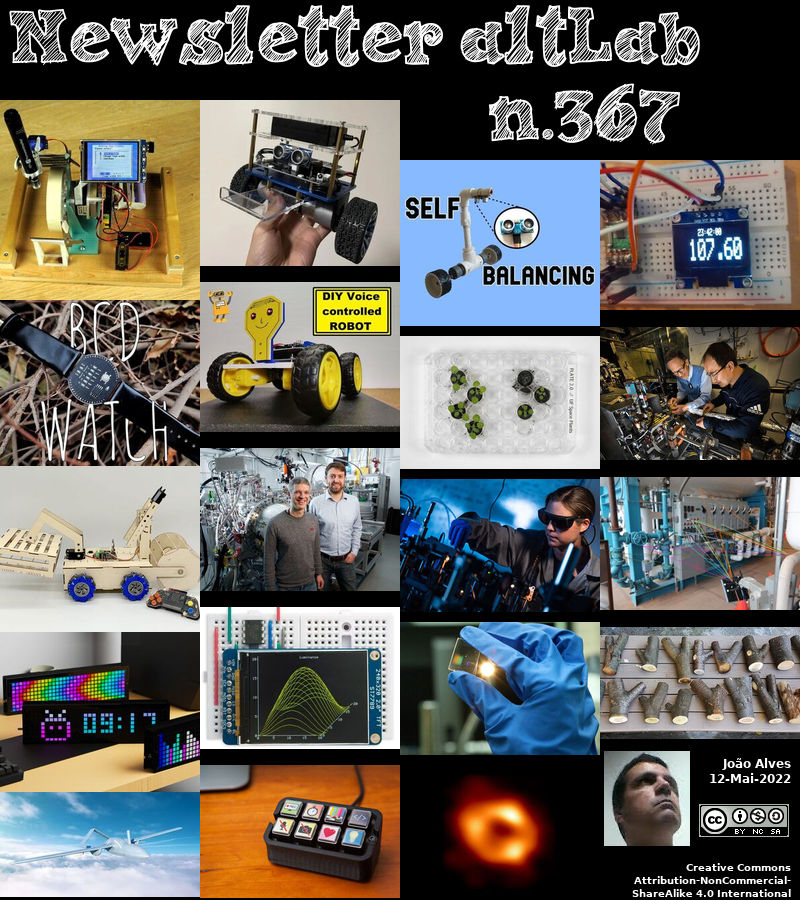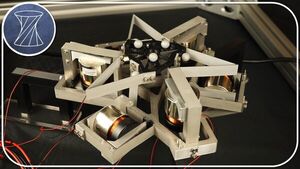2022-05-12 - Nº 367
Editorial
Esta é a Newsletter Nº 367 que se apresenta com o mesmo formato que as anteriores. Se gostar da Newsletter partilhe-a!
Todas as Newsletters encontram-se indexadas no link.
Esta Newsletter tem os seguintes tópicos:
Faz hoje anos que nascia, em 1857, o matemático alemão Oskar Bolza. Ele publicou The elliptic s-functions considerado como um caso especial das s-funções hiperelípticas em 1900. A partir de 1910, ele trabalhou no cálculo das variações. Bolza escreveu um livro clássico sobre o assunto, Lectures on the Calculus of Variations (1904). Voltou à Alemanha em 1910, onde pesquisou a teoria das funções, as equações integrais e o cálculo das variações. Em 1913, publicou um artigo que apresentava um novo tipo de problema de variações, agora chamado "o problema de Bolza". No ano seguinte, escreveu sobre variações para um problema integral envolvendo desigualdades, que mais tarde se tornaram importantes na teoria do controlo.
Faz também hoje anos que nascia, em 1895, o químico e físico norte-americano nascido no Canadá William Giauque. Ele recebeu o Prémio Nobel da Química em 1949 pelos seus "feitos no campo da termodinâmica química e especialmente o seu trabalho sobre o comportamento da matéria a temperaturas muito baixas e os seus estudos estreitamente aliados da entropia". É recordado particularmente pela sua descoberta da desmagnetização adiabática como meio para atingir temperaturas próximas do zero absoluto, bem como pelos seus exaustivos e meticulosos estudos termodinâmicos, ao longo de uma vida inteira de investigação, que utilizaram a terceira lei da termodinâmica, ao mesmo tempo que desenvolveram um grande conjunto de provas para a sua validade.
Faz igualmente hoje anos que nascia, em 1910, a bioquímica inglesa Dorothy Hodgkin. Ela recebeu o Prémio Nobel da Química em 1964 pelas suas descobertas, pela utilização de técnicas de raios X, da estrutura de moléculas biologicamente importantes, incluindo a penicilina (1946), a vitamina B-12 (1956), e mais tarde, a hormona proteica insulina (1969). As suas realizações incluíram não só estas determinações de estrutura e o conhecimento científico que elas proporcionaram, mas também o desenvolvimento de métodos que tornaram possíveis tais determinações de estrutura.
Por fim, faz hoje anos que nascia, em 1939, o inventor norte-americano Chuck Hull. Ele é um dos inventores da impressora SLA 3D, a primeira tecnologia de prototipagem rápida comercial, e do formato de ficheiro STL amplamente utilizado. É nomeado em mais de 60 patentes dos EUA, bem como outras patentes em todo o mundo nos campos da óptica de iões e da prototipagem rápida. Foi empossado no Hall da Fama dos Inventores Nacionais em 2014 e em 2017 foi um dos primeiros empossados no Hall da Fama do TCT.
Em 1936, o teclado da máquina de escrever Dvorak foi patenteado nos EUA por Dvorak e Dealey (Patente No. 2,040,248). Os peritos em eficiência August Dvorak (um primo do compositor) e William Dealey estudaram a máquina de escrever para determinar que poderiam arranjar as teclas de uma nova forma que aceleraria os operadores da máquina de escrever. Conceberam um teclado para maximizar a eficiência, colocando letras comuns na fila de casa, e fazer com que os dedos mais fortes das mãos fizessem a maior parte do trabalho. Em contraste, a disposição original QWERTY foi concebida para as máquinas de escrever anteriores, menos eficientes. Anteriormente, a velocidade resultaria em duas barras de tipo a baterem uma na outra nas suas viagens, pelo que o teclado original foi disposto de forma a reduzir colisões.
Em 1941, Konrad Zuse completou o primeiro computador programável totalmente funcional do mundo (Turing-complete computer), a sua máquina Z3. Foi também o primeiro computador do género a utilizar o sistema binário em vez do sistema decimal. Era um computador digital electromecânico construído com 2.400 relés. Os programas eram introduzidos a partir de rolos perfurados de película de filme de descarte. Notavelmente, o Z3 era programável, enquanto que o Atanasoff binário ABC (1942) e o ENIAC (1945-46) desenvolvidos independentemente eram calculadoras de propósito especial, nenhum dos quais era livremente programável. A Z3 foi utilizada pela indústria aeronáutica alemã para resolver sistemas de equações simultâneas e aspectos matemáticos da vibração das estruturas de ar sob tensão. Foi destruída em 1944 durante os bombardeamentos da II Guerra Mundial.
Nesta semana que passou foi lançada a distribuição Fedora 36 da RedHat. As grandes novidades são o Kernel de Linux 5.17 e o GNOME 42. Outras novidades igualmente interessantes são o podman 4.0, o Ruby 3.1, o Golang 1.18, o PHP 8.1 e o GCC 12. Trata-se de uma distribuição que usa versões bastante recentes dos mais importantes pacotes de software Open Source e que sem dúvida é uma distro sólida.
Na Newsletter desta semana apresentamos diversas noticias, artigos científicos, projetos de maker e alguns vídeos interessantes.
 João Alves ([email protected])
João Alves ([email protected])
O conteúdo da Newsletter encontra-se sob a licença  Creative Commons Attribution-NonCommercial-ShareAlike 4.0 International License.
Creative Commons Attribution-NonCommercial-ShareAlike 4.0 International License.
Novidades da Semana

Announcing Fedora Linux 36
"Today, I’m excited to share the results of the hard work of thousands of Fedora Project contributors: our latest release, Fedora Linux 36, is here! By the community, for the community Normally when I write these announcements, I talk about some of the great technical changes in the release. This time, I wanted to put the focus on the community that makes those changes happen. Fedora isn’t just a group of people toiling away in isolation — we’re friends. In fact, that’s one of our Four Foundations. One of our newest Fedora Friends, Juan Carlos Araujo said it beautifully in a Fedora Discussion post: Besides functionality, stability, features, how it works under the hood, and how cutting-edge it is, I think what makes or breaks a distro are those intangibles, like documentation and the community." [...]
Outras Notícias

IBM Unveils New Roadmap to Practical Quantum Computing Era; Plans to Deliver 4,000+ Qubit System
"IBM (NYSE: IBM) today announced the expansion of its roadmap for achieving large-scale, practical quantum computing. This roadmap details plans for new modular architectures and networking that will allow IBM quantum systems to have larger qubit-counts – up to hundreds of thousands of qubits. To enable them with the speed and quality necessary for practical quantum computing, IBM plans to continue building an increasingly intelligent software orchestration layer to efficiently distribute workloads and abstract away infrastructure challenges. IBM’s work to usher in an era of practical quantum computing will leverage three pillars: robust and scalable quantum hardware; cutting-edge quantum software to orchestrate and enable accessible and powerful quantum programs; and a broad global ecosystem of quantum-ready organizations and communities. “In just two years, our team has made incredible progress on our existing quantum roadmap. Executing on our vision has given us clear visibility into the future of quantum and what it will take to get us to the practical quantum computing era,” said Darío Gil, Senior Vice President, Director of Research, IBM." [...]
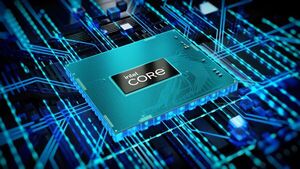
12th Gen Intel Core HX Processors Launch as World’s Best Mobile Workstation Platform
"Today at Intel Vision 2022, Intel announced seven new mobile processors to the 12th Gen Intel® Core™ mobile family. The 12th Gen Intel® Core™ HX processors utilize desktop-caliber silicon in a mobile package – to deliver high levels of performance for professional workflows like CAD, animation and visual effects. The HX processors are unlocked out of the box and available in Core i5, Core i7 and Core i9 models. Professionals and creators need more processing power and greater platform bandwidth to iterate content faster. This enables businesses and production agencies to better meet milestones and budgets of fast-paced working environments. The 12th Gen Intel Core HX processors enable the best mobile workstation platforms by providing 65 percent more performance in multi-threaded workloads1 with more cores, more memory and more I/O while utilizing Intel® Thread Director technology to leverage high-power Performance-cores and Efficient-cores so pros can create, program, render and work with maximum efficiency in the office, at home or on the go." [...]

TI drives isolation technology forward with new solid-state relays that provide industry-leading reliability
"New portfolio can help make EVs safer while reducing solution size up to 90% and cost by as much as 50% Building on more than two decades of experience developing new isolation manufacturing technologies and integrated circuits (ICs) for high-voltage systems, Texas Instruments (TI) (Nasdaq: TXN) today introduced a new portfolio of solid-state relays, including automotive-qualified isolated drivers and switches, that deliver industry-leading reliability to help make electric vehicles (EVs) safer. The new isolated solid-state relays also provide the smallest solution size while reducing the bill-of-materials (BOM) cost of powertrain and 800-V battery-management systems. For more information, see ti.com/ssr-pr. The TPSI3050-Q1 isolated switch driver with an integrated 10-V gate supply and the TPSI2140-Q1 1,400-V, 50-mA isolated switch both integrate power and signal isolation across a single barrier using a unique approach that improves reliability, while significantly reducing solution size and cost compared to existing electromechanical relays and solid-state photorelays. The devices are the first in a new solid-state relays portfolio that will also include ICs designed for high-voltage industrial applications. To learn more about the benefits of solid-state relays, read the technical article, "How to Achieve Higher-Reliability Isolation and a Smaller Solution Size with Solid-State Relays."" [...]
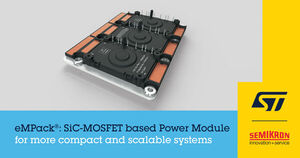
STMicroelectronics cooperates with Semikron to integrate silicon-carbide power technology in next-generation electric-vehicle drives
"STMicroelectronics (NYSE: STM), a global semiconductor leader serving customers across the spectrum of electronics applications, has revealed it is supplying silicon carbide (SiC) technology for the eMPack® electric-vehicle (EV) power modules from Semikron, one of the world’s leading manufacturers of power modules and systems. This is the result of a four-year technical collaboration between the two companies to design-in ST’s advanced SiC power semiconductors for superior efficiency and industry-benchmark performance in more compact systems. SiC is quickly becoming the automotive industry’s preferred power technology for EV traction drives, contributing to greater driving range and reliability. Semikron recently announced it had secured a billion-Euro contract to supply their innovative eMPack power modules to a major German car maker, beginning in 2025. “ST’s industry-leading SiC device-manufacturing capabilities and in-depth expertise with the technology enabled us to integrate these cutting-edge semiconductors with our advanced manufacturing processes, which enhance reliability, power density, and scalability to meet the needs of the automotive industry,” said Karl-Heinz Gaubatz, Semikron Chief Executive Officer (CEO) and Chief Technical Officer (CTO). “As we now move towards volume-production, our collaboration with ST brings the assurance of a robust supply chain that gives control over quality and delivery performance.” “Leveraging our SiC technology, Semikron’s advanced scalable eMPack family of power modules is ready to make a major contribution towards zero-emission motoring,” said Edoardo Merli, Power Transistor Sub-Group General Manager and Executive Vice President of STMicroelectronics." [...]

AMD Announces Three New Radeon RX 6000 Series Graphics Cards and First Games Adding Support for AMD FidelityFX Super Resolution 2.0
"AMD (NASDAQ: AMD) today announced new additions to the AMD Radeon™ RX 6000 Series product line: the AMD Radeon RX 6950 XT — the most powerful graphics card in the Radeon RX 6000 Series family — the Radeon RX 6750 XT and the Radeon RX 6650 XT graphics cards. With a 2.1GHz Game Clock1 coupled with 16GB of high-speed GDDR6 memory, the AMD Radeon RX 6950 XT graphics card delivers incredible performance and breathtaking visuals for the most demanding AAA and esports titles at 4K resolution with max settings. The AMD Radeon RX 6750 XT graphics card offers a cutting-edge, high-performance gaming experience at 1440p resolution with max settings, while the AMD Radeon RX 6650 XT graphics card offers ultra-smooth, high-refresh rate 1080p gaming with max settings in the latest titles. All of the new AMD Radeon graphics cards are built on the breakthrough AMD RDNA 2 gaming architecture, include process optimizations plus firmware and software enhancements, and are equipped with high-bandwidth, low-latency AMD Infinity Cache™ technology and ultra-fast GDDR6 memory at up to 18Gbps. They also support Microsoft Windows 11 and Microsoft DirectX® 12 Ultimate, AMD FidelityFX™ Super Resolution (FSR) 1.0, the forthcoming AMD FSR 2.02 and AMD Radeon Super Resolution upscaling technologies, as well as other advanced features that provide visually stunning, high-refresh rate gaming experiences. “There are three billion gamers worldwide and counting, and about half play on PCs3,” said Scott Herkelman, senior vice president and general manager, Graphics Business Unit at AMD." [...]

onsemi Launches Highly Efficient USB Power Delivery Solutions
"Higher frequency AC/DC controllers and drivers improve industrial design while ensuring optimal efficiency across the load range onsemi (Nasdaq: ON), a leader in intelligent power and sensing technologies, today launched a trio of products for USB Power Delivery (PD) design. The new controllers and driver incorporate innovative features that dramatically reduce BOM content of high efficiency AC/DC power supplies, specifically for load ranges above 100W. “USB PD is an important and growing application but meeting its efficiency and size requirements is a tough challenge for designers,” said Shane Chilton, senior director, Power Conversion Solutions Group, onsemi. “Thanks to our suite of products, designers can remove up to 15 components from their existing BOM reducing the cost of their designs, while ensuring that they meet the demanding efficiency and performance standards of the application.” The NCP1345 is a Quasi-Resonant (QR) flyback controller for high-performance off-line power supplies and USB Type-C PD fast charging applications. The high frequency QR operation (up to 350 kHz) allows the size of magnetic components to be reduced. The NCP1345 is compatible with the Limited Power Source (LPS) requirement due to the inbuilt constant output current limit while rapid frequency foldback features ensure excellent light load efficiency." [...]

MediaTek Unveils New AIoT Platform Stack and Introduces the Genio 1200 AIoT Chip
"With the MediaTek Genio platform stack, designers and OEMs can bring differentiated and secure intelligent devices to market faster May 11, 2022 - 1:30 AM Scottsdale, Arizona – May 10, 2022 – MediaTek today unveiled its new Genio platform for AIoT devices and introduced the first chip in the Genio family, the Genio 1200 designed for premium AIoT products. MediaTek Genio is a complete platform stack for the AIoT with powerful and ultra- efficient chipsets, open platform software development kits (SDKs) and a developer portal with comprehensive resources and tools. This all-in-one platform makes it easy for brands to develop innovative consumer , enterprise and industrial smart applications at the premium, mid-range and entry levels, and bring these devices to market faster. With MediaTek Genio, customers have access to all the hardware, software and resources needed to go from concept to design and manufacturing. Customers can choose from a range of Genio chips to suit their product needs, and then use MediaTek’s developer resources and the Yocto Linux open platform SDK to customize their designs. MediaTek also makes it easy for customers to access its partners’ system hardware and software, and leverage partners’ networks and sales channels." [...]
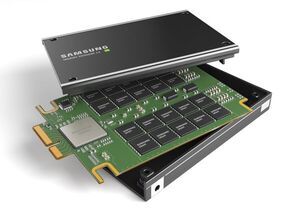
Samsung Electronics Introduces Industry’s First 512GB CXL Memory Module
"Newly developed CXL memory packs 4x the memory capacity over the previous version, enabling a server to scale to tens of terabytes with only one-fifth of the system latency Samsung to also introduce an upgraded version of its open-source software toolkit that facilitates CXL memory deployment into existing and emerging IT systems Samsung Electronics, the world leader in advanced memory technology, today announced its development of the industry’s first 512-gigabyte (GB) Compute Express Link (CXL) DRAM, taking an important step toward the commercialization of CXL which will enable extremely high memory capacity with low latency in IT systems. Since introducing the industry’s first CXL DRAM prototype with a field-programmable gate array (FPGA) controller in May 2021, Samsung has been working closely with data center, enterprise server and chipset companies to develop an improved, customizable CXL device. The new CXL DRAM is built with an application-specific integrated circuit (ASIC) CXL controller and is the first to pack 512GB of DDR5 DRAM, featuring four times the memory capacity and one-fifth the system latency over the previous Samsung CXL offering. “CXL DRAM will become a critical turning point for future computing structures by substantially advancing artificial intelligence (AI) and big data services, as we aggressively expand its usage in next-generation memory architectures including software-defined memory (SDM),” said Cheolmin Park, Vice President of Memory Global Sales & Marketing at Samsung Electronics, and Director of the CXL Consortium. “Samsung will continue to collaborate across the industry to develop and standardize CXL memory solutions, while fostering an increasingly solid ecosystem.” “As an active member of the CXL Consortium, Lenovo is committed to developing this important standard and helping build the ecosystem around the new CXL interconnect,” said Greg Huff, Chief Technology Officer, Lenovo Infrastructure Solutions Group. “We are excited to be part of Samsung’s CXL development program, working to foster the growth and adoption of innovative CXL products in future Lenovo systems.” “CXL is a key technology that enables more innovative ways to manage memory expansion and pooling which will play an important role in next-generation server platforms,” said Christopher Cox, Vice President of Strategic Technology at Montage Technology." [...]
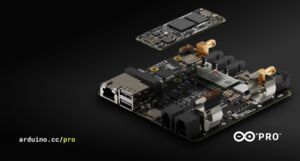
The new Portenta X8 (with Linux!) and Max Carrier redefine what’s possible
"Arduino’s mission has always been to give creators, makers and innovators the tools they need to turn their ideas into real projects. That will never change. What is changing, and at warp speed, is our definition of possible. Because every day our accessible, flexible and reliable open-source hardware grows more powerful, and our ecosystem more complete. As you may have heard during Arduino Week, Arduino Pro is launching two new products in the Portenta range: the revolutionary X8 module, which merges Arduino and Linux for the first time, and Max Carrier, which gives you super prototyping powers to make your ideas come to life easier and faster than ever. Portenta X8 is a plug-and-play, industrial-grade SOM that comes with Linux OS preloaded onboard, making for a hybrid combination of microprocessor and microcontroller with the capability for AI and ML on the edge." [...]
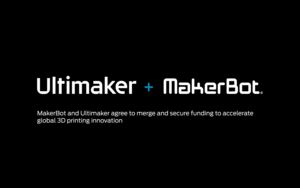
MakerBot and Ultimaker agree to merge to accelerate global adoption of additive manufacturing
"The new entity has secured additional funding of $62.4M to fuel global 3D printing innovation. MakerBot and Ultimaker, two leaders in desktop 3D printing, today announced that they have come to a business combination agreement that will accelerate the adoption of additive manufacturing by providing a comprehensive desktop 3D printing ecosystem of hardware, software, and materials. The new entity will be backed by existing investors, NPM Capital and Stratasys (Nasdaq: SSYS), and will benefit from a planned cash investment of $62.4 million to fuel innovation and expansion into new markets. The new company will be led by Nadav Goshen, current MakerBot CEO, and Jürgen von Hollen, current Ultimaker CEO, who will act as Co-CEOs, with Nadav managing operations and R&D and Jürgen managing the commercial functions. “ “This merger marks an important milestone for Ultimaker and MakerBot,” says Jürgen von Hollen, CEO of Ultimaker. “Innovation and growth are both critical to bringing desktop 3D printing from a specialty technology into mainstream business adoption." [...]
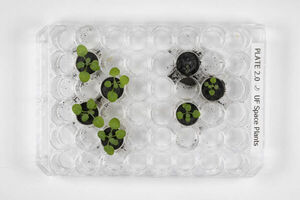
Scientists Grow Plants in Lunar Soil
"NASA-funded study breaks new ground in plant research In the early days of the space age, the Apollo astronauts took part in a visionary plan: Bring samples of the lunar surface material, known as regolith, back to Earth where they could be studied with state-of-the-art equipment and saved for future research not yet imagined. Fifty years later, at the dawn of the Artemis era and the next astronaut return to the Moon, three of those samples have been used to successfully grow plants. For the first time ever, researchers have grown the hardy and well-studied Arabidopsis thaliana in the nutrient-poor lunar regolith. “This research is critical to NASA’s long-term human exploration goals as we’ll need to use resources found on the Moon and Mars to develop food sources for future astronauts living and operating in deep space,” said NASA Administrator Bill Nelson. “This fundamental plant growth research is also a key example of how NASA is working to unlock agricultural innovations that could help us understand how plants might overcome stressful conditions in food-scarce areas here on Earth.” Scientists at the University of Florida have made a breakthrough discovery — decades in the making — that could both enable space exploration and benefit humanity. “Here we are, 50 years later, completing experiments that were started back in the Apollo labs,” said Robert Ferl, a professor in the Horticultural Sciences department at the University of Florida, Gainesville, and a communicating author on a paper published on May 12, 2022, in Communications Biology." [...]
Ciência e Tecnologia
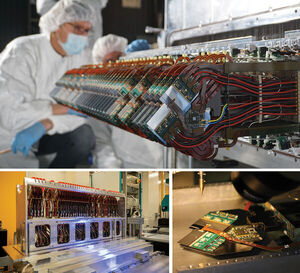
VELO’s voyage into the unknown
"The installation of LHCb’s all-new Vertex Locator is part of a major upgrade that will extend the experiment’s capabilities to search for physics beyond the Standard Model, describe Stefano de Capua, Wouter Hulsbergen and David Hutchcroft. The first 10 years of the LHC have cemented the Standard Model (SM) as the correct theory of known fundamental particle interactions. But unexplained phenomena such as the cosmological matter–antimatter asymmetry, neutrino masses and dark matter strongly suggest the existence of new physics beyond the current direct reach of the LHC. As a dedicated heavy-flavour physics experiment, LHCb is ideally placed to allow physicists to look beyond this horizon. Measurements of the subtle effects that new particles can have on SM processes are fully complementary to searches for the direct production of new particles in high-energy collisions. As-yet unknown particles could contribute to the mixing and decay of beauty and charm hadrons, for example, leading to departures from the SM in decay rates, CP-violating asymmetries and other measurements." [...]
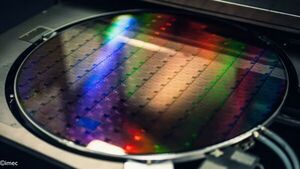
2D Experimental Pilot Line offers developers the chance to test graphene-based sensors on large scale and at low cost
"The 2D Experimental Pilot Line(2D-EPL), a project grown from the Graphene Flagship, has launched its first customisable wafer run. As one of five multi-project wafer (MPW) runs, this first phase targets sensor applications. Companies, universities and research institutes can include their designs as dies on joint wafers, to test their ideas for devices on a larger scale at relatively low costs. The 2D-EPL is a €20 million project aiming to pioneer the fabrication of prototype electronics and sensors based on graphene and related materials (GRMs), and at integrating them into established silicon semiconductor platforms. While doing so, the project will also refine and scale up the manufacturing process of graphene-based electronics, including developing critical tools, materials and processes. The 2D-EPL includes partners from across the whole value chain – from tool manufacturers to semiconductor fabrication lines – including Chalmers University of Technology, Sweden; Aixtron, Germany and United Kingdom; Interuniversity Microelectronics Centre (imec), Belgium; AMO, Germany; VTT, Finland; Süss MicroTec, Germany; Graphenea, Spain; Micro Resist Technology, Germany; Innovations for High Performance Microelectronics (IHP), Germany, and Oxford Instruments, United Kingdom." [...]

Ultrafast 'Camera' Captures Hidden Behavior of Potential 'Neuromorphic' Material
"Study uncovers surprising details of insulator-to-metal transition in vanadium dioxide, a promising material for new technologies that emulate brain cells Imagine a computer that can think as fast as the human brain while using very little energy. That’s the goal of scientists seeking to discover or develop materials that can send and process signals as easily as the brain’s neurons and synapses. Identifying quantum materials with an intrinsic ability to switch between two distinct forms (or more) may hold the key to these futuristic sounding “neuromorphic” computing technologies. In a paper just published in the journal Physical Review X, Yimei Zhu, a physicist at the U.S. Department of Energy’s (DOE) Brookhaven National Laboratory, and his collaborators describe surprising new details about vanadium dioxide, one of the most promising neuromorphic materials. Using data collected by a unique “stroboscopic camera,” the team captured the hidden trajectory of atomic motion as this material transitions from an insulator to a metal in response to a pulse of light. Their findings could help guide the rational design of high-speed and energy-efficient neuromorphic devices." [...]

ITMO Researchers Explore Direct Laser Writing of Nanolattices
"Researchers from ITMO’s Faculty of Nanoelectronics together with their colleagues from the Lebedev Physical Institute, D. Mendeleev University of Chemical Technology of Russia, and the National Research Nuclear University MEPhI have conducted a study that showed that nanolattices possess high spectral selectivity. Their layers can be used as color filters for specific wavelength ranges, and one glass plate can contain records of up to six layers. Using this technology, the scientists were able to implement dispersive birefringent filters, which have multiple applications. For instance, they can be used to create AR/VR color displays or novel biochemical sensors for bacterial analysis. All in one For two years, the have been modeling, designing, and testing a wide range of integral optical elements to build a waveguide holographic periscope, an essential part of next-gen AR/VR glasses. Current headsets tend to limit a user’s field of view, while smart glasses can complement the virtual space and inform users about surrounding objects and environment." [...]

Carbon nanochemistry written in the stars
"A universal mechanism could explain the formation of carbon nanoparticles in interstellar and terrestrial environments. Carbon nanostructures that formed in circumstellar envelopes around carbon-rich stars may have a shared chemical origin with soot particles produced by fuel combustion. The same reaction mechanism may underpin each process, KAUST researchers have shown. The proposed mechanism could also lead to improved methods for carbon nanomaterial manufacture. Carbon-rich nanoparticle formation — whether interstellar or combustive in nature — is thought to rely on compounds called polycyclic aromatic hydrocarbons (PAHs), which are akin to clusters of fused benzene rings held together by shared carbon-carbon pi-bonds. Several mechanisms have been proposed to explain how PAHs could combine with other carbon molecules to grow into soot and related carbon nanoparticles." [...]
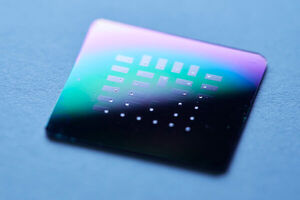
Ultrathin fuel cell uses the body’s own sugar to generate electricity
"Engineers have developed a glucose power source that could fuel miniature implants and sensors. Glucose is the sugar we absorb from the foods we eat. It is the fuel that powers every cell in our bodies. Could glucose also power tomorrow’s medical implants? Engineers at MIT and the Technical University of Munich think so. They have designed a new kind of glucose fuel cell that converts glucose directly into electricity." [...]
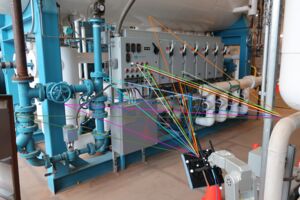
NIST Finds Wireless Performance Consistent Across 5G Millimeter-Wave Bands
"Settling a key dispute in the wireless communications field, researchers at the National Institute of Standards and Technology (NIST) found that transmission performance is consistent across different bands of the millimeter-wave (mmWave) spectrum targeted for high-speed, data-rich 5G systems. Wireless systems are moving to the mmWave spectrum at 10-100 gigahertz (GHz), above crowded cellular frequencies as well as early 5G systems around 3 GHz. System operators tend to prefer lower bands of the new mmWave spectrum. One reason is that they are influenced by a formula that says more signals are lost at higher frequencies due to smaller wavelengths resulting in a smaller useful antenna area. But until now, measurements of this effect by many organizations have disagreed over whether this is true. NIST researchers developed a new method to measure frequency effects, using the 26.5-40 GHz band as a target example." [...]

Impossible materials are created under extreme pressure
"Researchers at Linköping University, among other places, have created a new material that ought to be impossible. Its synthesis is, however, possible thanks to a new method that creates pressure approximately three times higher than in the Earth’s core. The results have been published in Nature. Chemical compounds and other materials change properties when they are exposed to high pressure and temperature. Diamond is one such example. It starts out as organic carbon that over a long period of time is compressed by the pressure down inside the Earth." [...]

Laser bursts drive fastest-ever logic gates
"Researchers at Rochester and Erlangen have taken a decisive step toward creating ultrafast computers. A long-standing quest for science and technology has been to develop electronics and information processing that operate near the fastest timescales allowed by the laws of nature. A promising way to achieve this goal involves using laser light to guide the motion of electrons in matter, and then using this control to develop electronic circuit elements—a concept known as lightwave electronics. Remarkably, lasers currently allow us to generate bursts of electricity on femtosecond timescales—that is, in a millionth of a billionth of a second. Yet our ability to process information in these ultrafast timescales has remained elusive. Now, researchers at the University of Rochester and the Friedrich-Alexander-Universität Erlangen-Nürnberg (FAU) have made a decisive step in this direction by demonstrating a logic gate—the building block of computation and information processing—that operates at femtosecond timescales." [...]
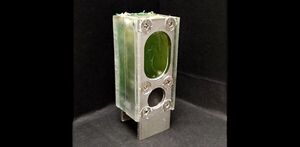
Algae-powered computing: scientists create reliable and renewable biological photovoltaic cell
"Researchers have used a widespread species of blue-green algae to power a microprocessor continuously for a year - and counting - using nothing but ambient light and water. Their system has potential as a reliable and renewable way to power small devices. The system, comparable in size to an AA battery, contains a type of non-toxic algae called Synechocystis that naturally harvests energy from the sun through photosynthesis. The tiny electrical current this generates then interacts with an aluminium electrode and is used to power a microprocessor. The system is made of common, inexpensive and largely recyclable materials. This means it could easily be replicated hundreds of thousands of times to power large numbers of small devices as part of the Internet of Things." [...]

Researchers Use Light for Thermomagnetic Recording on Silicon Waveguide
"Researchers have demonstrated, for the first time, light-induced thermomagnetic recording in a magnetic thin-film on silicon waveguides. The new writing technique is poised to enable miniature high-performance magneto-optical memories that don’t require bulky optics or mechanical rotation. Magneto-optical storage devices combine magnetic and optical recording techniques to store information. Although several companies once made rewritable magneto-optical disk drives, these drives are rarely used today. “Despite their significant advantages, magneto-optical drives have been replaced by cheaper flash drives or optical storage media such as DVDs,” said research team leader Toshiya Murai from the Tokyo Institute of Technology in Japan. “Because our new recording method can be implemented using silicon photonics, it could enable inexpensive magneto-optical devices that store large amounts of information on a small chip.” The researchers describe their new magneto-topical memory devices and light-based writing technique in the Optica Publishing Group journal Optics Express." [...]

Astronomers snap first-ever image of supermassive black hole Sagittarius A*
"The image reveals a glowing, donut-shaped ring at the Milky Way’s heart. Black holes are invisible by nature. Their pull is inescapable, forever trapping any light that falls into their gravitational abyss. But just beyond a black hole’s point of no return, light persists, and its patterns, like a photo negative, can reveal a black hole’s lurking presence. Now an international team of astronomers, including researchers at MIT’s Haystack Observatory, has captured the light around our own supermassive black hole, revealing for the first time, an image of Sagittarius A* (Sgr A*, pronounced ‘sadge-ay-star’), the black hole at the heart of the Milky Way galaxy. The image was created by the Event Horizon Telescope (EHT) — a global network of radio telescopes whose movements are choreographed so they function as one virtual, planet-sized telescope." [...]

Unusual quantum state of matter observed for the first time at UdeM
"It’s not every day that someone comes across a new state of matter in quantum physics, the scientific field devoted to describing the behaviour of atomic and subatomic particles in order to elucidate their properties. Yet this is exactly what an international team of researchers that includes Andrea Bianchi, University of Montreal physics professor and researcher at the Regroupement québécois sur les matériaux de pointe, and his students Avner Fitterman and Jérémi Dudemaine has done. In a recent article published in the scientific journal Physical Review X, the researchers document a “quantum spin liquid ground state” in a magnetic material created in Bianchi’s lab: Ce2Zr2O7, a compound composed of cerium, zirconium and oxygen. Like a liquid locked inside an extremely cold solid In quantum physics, spin is an internal property of electrons linked to their rotation. It is spin that gives the material in a magnet its magnetic properties. In some materials, spin results in a disorganized structure similar to that of molecules in a liquid, hence the expression “spin liquid.” In general, a material becomes more disorganized as its temperature rises." [...]

4D composite printing can improve the wings of drones, according to new Concordia research
"Suong Hoa’s manufacturing technique could make small aircraft easier to build and more fuel efficient The aviation industry faces multiple pressures from higher fuel costs and increased scrutiny over the environmental and quality-of-life impacts from its aircraft. Researchers are looking for new methods of keeping expenses down while improving overall efficiency, and the relatively new market of unmanned aerial vehicles (UAVs) — or drones — is no exception. UAVs are occupying an ever-growing space in aviation circles. In a new paper published in the journal Composite Structures, Suong Hoa and his student co-authors present a method to make UAV wings cheaper to manufacture and more efficient in flight. Hoa is a professor of mechanical, industrial and aerospace engineering at the Gina Cody School of Engineering and Computer Science. Using a technique Hoa pioneered known as 4D printing of composites, the authors performed a feasibility study on the application of a new way to manufacture adaptive compliant trailing edge (ACTE) morphing wings." [...]

Computational sleuthing confirms first 3D quantum spin liquid
"Computational detective work by U.S. and German physicists has confirmed cerium zirconium pyrochlore is a 3D quantum spin liquid. Despite the name, quantum spin liquids are solid materials in which quantum entanglement and the geometric arrangement of atoms frustrate the natural tendency of electrons to magnetically order themselves in relation to one another. The geometric frustration in a quantum spin liquid is so severe that electrons fluctuate between quantum magnetic states no matter how cold they become. Theoretical physicists routinely work with quantum mechanical models that manifest quantum spin liquids, but finding convincing evidence that they exist in actual physical materials has been a decadeslong challenge. While a number of 2D or 3D materials have been proposed as possible quantum spin liquids, Rice University physicist Andriy Nevidomskyy said there’s no established consensus among physicists that any of them qualify. Nevidomskyy is hoping that will change based on the computational sleuthing he and colleagues from Rice, Florida State University and the Max Planck Institute for Physics of Complex Systems in Dresden, Germany, published this month in the open-access journal npj Quantum Materials." [...]

SLAC’s superconducting X-ray laser reaches operating temperature colder than outer space
"The facility, LCLS-II, will soon sharpen our view of how nature works on ultrasmall, ultrafast scales, impacting everything from quantum devices to clean energy. Nestled 30 feet underground in Menlo Park, California, a half-mile-long stretch of tunnel is now colder than most of the universe. It houses a new superconducting particle accelerator, part of an upgrade project to the Linac Coherent Light Source (LCLS) X-ray free-electron laser at the Department of Energy’s SLAC National Accelerator Laboratory. Crews have successfully cooled the accelerator to minus 456 degrees Fahrenheit – or 2 kelvins – a temperature at which it becomes superconducting and can boost electrons to high energies with nearly zero energy lost in the process. It is one of the last milestones before LCLS-II will produce X-ray pulses that are 10,000 times brighter, on average, than those of LCLS and that arrive up to a million times per second – a world record for today’s most powerful X-ray light sources. “In just a few hours, LCLS-II will produce more X-ray pulses than the current laser has generated in its entire lifetime,” says Mike Dunne, director of LCLS." [...]
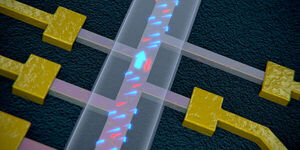
Quantum one-way street in topological insulator nanowires
"Very thin wires made of a topological insulator could enable highly stable qubits, the building blocks of future quantum computers. Scientists see a new result in topological insulator devices as an important step towards realizing the technology’s potential. An international group of scientists have demonstrated that wires more than 100 times thinner than a human hair can act like a quantum one-way street for electrons when made of a peculiar material known as a topological insulator. The discovery opens the pathway for new technological applications of devices made from topological insulators and demonstrates a significant step on the road to achieving so-called topological qubits, which it has been predicted can robustly encode information for a quantum computer. To achieve this result, the groups of Professor Dr. Jelena Klinovaja and Professor Dr. Daniel Loss at the University of Basel closely collaborated with experimental physicists at the University of Cologne in the group of Professor Dr. Yoichi Ando. Their study has now been published in Nature Nanotechnology." [...]

MIT engineers build load-bearing structures using tree forks instead of steel joints
"Discarded tree forks could replace load-bearing joints in architecture projects using a construction technique developed by researchers at the Massachusetts Institute of Technology. The system combines generative design and robotic fabrication to allow tree forks – the pieces of wood where a trunk or branch splits into two – to be used as the Y-shaped nodes that connect straight building elements. Created by the Digital Structures research group at the Massachusetts Institute of Technology (MIT), the five-step approach has already been used to install a demonstration structure on the university's campus, with a larger pavilion now in the works. The researchers believe their system could reduce the environmental impact of construction by offering a replacement for high-strength but emissions-intensive virgin materials such as steel, which are usually needed to form structural components. In comparison, tree forks are not just natural and renewable but also a reclaimed waste product from the timber industry, which uses only the straight sections of trees to create furniture and building materials. Caitlin Mueller, associate professor in the Building Technology programme at MIT and leader of the Digital Structures research group, describes tree forks as "naturally engineered structural connections" that can transfer force very efficiently thanks to their internal fibre network." [...]
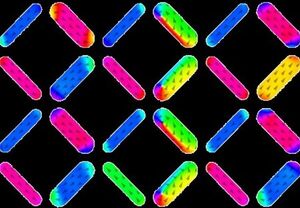
‘Nanomagnetic’ computing can provide low-energy AI, researchers show
"Researchers have shown it is possible to perform artificial intelligence using tiny nanomagnets that interact like neurons in the brain. The new method, developed by a team led by Imperial College London researchers, could slash the energy cost of artificial intelligence (AI), which is currently doubling globally every 3.5 months. In a paper published today in Nature Nanotechnology, the international team have produced the first proof that networks of nanomagnets can be used to perform AI-like processing. The researchers showed nanomagnets can be used for ‘time-series prediction’ tasks, such as predicting and regulating insulin levels in diabetic patients. Artificial intelligence that uses ‘neural networks’ aims to replicate the way parts of the brain work, where neurons talk to each other to process and retain information. A lot of the maths used to power neural networks was originally invented by physicists to describe the way magnets interact, but at the time it was too difficult to use magnets directly as researchers didn’t know how to put data in and get information out." [...]
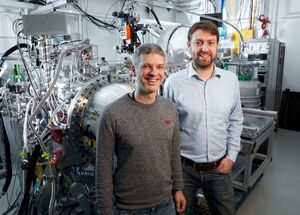
Scientists solve the Mystery about the Active Phase in Catalytic Carbon Dioxide Reduction
"An international research team led by researchers of Stockholm University has for the first time been able to study the surface of a copper-zinc catalyst when carbon dioxide is reduced to methanol. The results – obtained at DESY´s brilliant light source PETRA III – are published in the scientific journal Science. A better knowledge of the catalytic process of methanol synthesis and the possibility of finding even more efficient materials opens the door for a green transition in the chemical industry. Methanol is currently one of the most important basic petrochemicals with an annual production of 110 million tones. It can be converted into tens of thousands of different products and used to make such things as plastics, detergents, pharmaceuticals and fuels. Methanol also has the potential to become a future energy carrier for example by producing aviation fuel from captured carbon dioxide and hydrogen from electrolysis of water." [...]
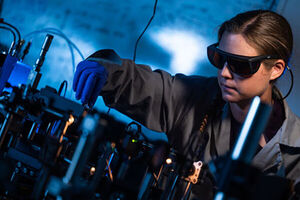
Rice ‘metalens’ could disrupt vacuum UV market
"Solid-state nanophotonic technology could potentially replace cabinets of equipment. Rice University photonics researchers have created a potentially disruptive technology for the ultraviolet optics market. By precisely etching hundreds of tiny triangles on the surface of a microscopic film of zinc oxide, nanophotonics pioneer Naomi Halas and colleagues created a “metalens” that transforms incoming long-wave UV (UV-A) into a focused output of vacuum UV (VUV) radiation. VUV is used in semiconductor manufacturing, photochemistry and materials science and has historically been costly to work with, in part because it is absorbed by almost all types of glass used to make conventional lenses. “This work is particularly promising in light of recent demonstrations that chip manufacturers can scale up the production of metasurfaces with CMOS-compatible processes,” said Halas, co-corresponding author of a metalens demonstration study published in Science Advances. “This is a fundamental study, but it clearly points to a new strategy for high-throughput manufacturing of compact VUV optical components and devices.” Halas' team showed its microscopic metalens could convert 394-nanometer UV into a focused output of 197-nanometer VUV." [...]
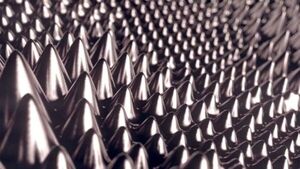
Mechanism ‘splits’ electron spins in magnetic material
"Holding the right material at the right angle, Cornell researchers have discovered a strategy to switch the magnetization in thin layers of a ferromagnet – a technique that could eventually lead to the development of more energy-efficient magnetic memory devices. The team’s paper, “Tilted Spin Current Generated by the Collinear Antiferromagnet Ruthenium Dioxide,” published May 5 in Nature Electronics. The paper’s co-lead authors are postdoctoral researcher Arnab Bose and doctoral students Nathaniel Schreiber and Rakshit Jain. For decades, physicists have tried to change the orientation of electron spins in magnetic materials by manipulating them with magnetic fields. But researchers including Dan Ralph, the F.R. Newman Professor of Physics in the College of Arts and Sciences and the paper’s senior author, have instead looked to using spin currents carried by electrons, which exist when electrons have spins generally oriented in one direction." [...]
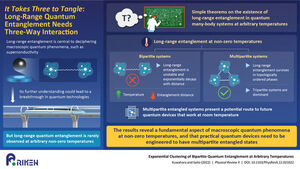
It takes three to tangle: long-range quantum entanglement needs three-way interaction
"A theoretical study shows that long-range entanglement can indeed survive at temperatures above absolute zero, if the correct conditions are met. Quantum computing has been earmarked as the next revolutionary step in computing. However current systems are only practically stable at temperatures close to absolute zero. A new theorem from a Japanese research collaboration provides an understanding of what types of long-range quantum entanglement survive at non-zero temperatures, revealing a fundamental aspect of macroscopic quantum phenomena and guiding the way towards further understanding of quantum systems and designing new room-temperature stable quantum devices. When things get small, right down to the scale of one-thousandth the width of a human hair, the laws of classical physics get replaced by those of quantum physics. The quantum world is weird and wonderful, and there is much about it that scientists are yet to understand." [...]
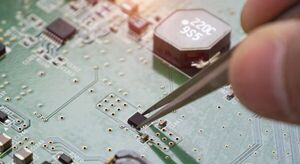
Scientists discovers new properties of magnetism that could change our computers
"Our electronics can no longer shrink and are on the verge of overheating. But in a new discovery from the University of Copenhagen, researchers have uncovered a fundamental property of magnetism, which may become relevant for the development of a new generation of more powerful and less hot computers. The ongoing miniaturization of components for computers which have electrons as their vehicles for information transfer has become challenged. Instead, it could be possible to use magnetism and thereby keep up the development of both cheaper and more powerful computers. This is one of the perspectives as scientists from the Niels Bohr Institute (NBI), University of Copenhagen, today publish a new discovery in the prestigious journal Nature Communications. “The function of a computer involves sending electric current through a microchip." [...]
Projetos Maker
Diversos Projetos interessantes.
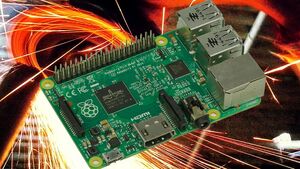
Circle
"A C++ bare metal environment for Raspberry Pi with USB (32 and 64 bit) Overview Circle is a C++ bare metal programming environment for the Raspberry Pi. It should be usable on all existing models (tested on model A+, B, B+, on Raspberry Pi 2, 3, 4, 400 and on Raspberry Pi Zero), except on the Raspberry Pi Pico, which is not supported. Circle provides several ready-tested C++ classes and add-on libraries, which can be used to control different hardware features of the Raspberry Pi. Together with Circle there are delivered several sample programs, which demonstrate the use of its classes. Circle can be used to create 32-bit or 64-bit bare metal applications. Circle includes bigger (optional) third-party C-libraries for specific purposes in addon/ now." [...]

SG-2.0 Wireless Weather Station
"In this paper we have presented how to implement a Weather Station[1] to monitor various parameters: - Temperature (indoor + outdoor); - Humidity (indoor + outdoor); - Pressure; - Altitude; The practical project is based on the Arduino Nano Interface[2] and involves the use of modules and sensors: - NRF24L01 (radio-communications); - DHT22 (temperature and humidity sensor); - BMP180 (pressure and altitude sensor); - DS3231 (Real Time Clock module); It was opted for practical construction using these sub-assemblies because they are cheap and easy to use and interconnect. - Altitude and pressure sensor BMP180 The BMP180 is an ideal module for measuring atmospheric pressure, altitude as well as temperature, being an inexpensive and very easy to use module. It uses only I2C communications (A4 - SDA respectively A5 - SCL), measuring the absolute atmospheric pressure of the environment using a digital barometer. In addition to the advantages of size and ease of implementation in projects, it has a very low current consumption of only 0.3uA. - Temperature and humidity sensorDHT11/DHT22 These DHT modules are high performance temperature and humidity sensors ensuring high reliability and excellent stability. Temperature is measured using a negative temperature coefficient (NTC) thermistor and relative humidity is measured using a capacitive sensor." [...]
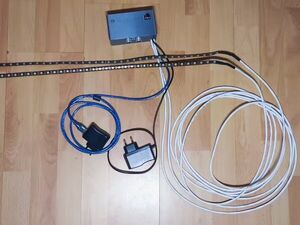
Music / hand controlled led strip with arduino
"Control a led strip with an ultrasonic sensor, set the color with your hand, or switch modes and let the music control it! 3 modes: Mode A: distance controlled led strip, meaning, based on the distance reading of the sensor, it adjusts the hue of the led strip. The scale goes from 20 cm from the sensor, to 60 cm. And when we hold our hand between 65 and 80 cm, it switches modes, so we can adjust the value / brightness. Mode B: This mode reacts to sound via the microphone. This has two modes ad well, the first when it bounces up and down, and the second is when all the leds are on, and it varies the brightness." [...]
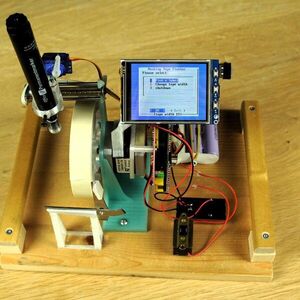
Masking Tape Plotter
"Make Beautiful Big Labels Practically for Free This is an appliance that plots labels on ordinary masking tape. It uses Hershey Fonts and GRBL and the stepper assembly from a DVD drive. What makes it noteworthy (other that the fact that it is the first of its kind) is that the DVD drive assembly has not been used as a whole as in so many "tiny CNC machine" projects, but I designed a custom y-carriage with 3mm steel rods, bronze sinter bearings and a 3d-printed "nut". I used both FreeCAD and Blender as both apps have their specific strengths. Inspiration was drawn from Eggbot and Axidraw, one could even say that this machine is the synthesis of those two. This hack was only possible because the awesome hf2gcode utility written by Andreas Weber (Andy1978 on github)." [...]

FM Radio with Clock Function
"Clock radio using the RDA5807M and RTC DS1302 I liked the original radio design and use of the miniature RDA5807M Stereo radio module and decided to modify the code and add a clock to the design. After trying to use RDS I realised I needed a way to show the time when the radio is off.. (maybe later adding an alarm to turn it back on).. so I used the RTC DS1302 module to show the time instead. In this project, I assume the DS1302 is already set to the correct time ( covered in the library examples). " [...]
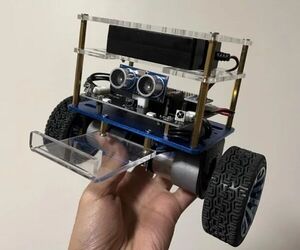
Dancing TWIP Robot
"Background/Goals The goal of our project was to make a two wheel inverted pendulum (TWIP) robot dance to music. The most straightforward way to do this would be to record a set of commands that go well with a particular song and replay them in time with the music. However, we wanted to be able to adapt to different types of music. Dance Videos In Order: "Crab Rave" after finding the bpm using Matlab (tilting at 125 bpm) "Dance of the Sugar Plum Fairy" by manually sending individual notes (tilting) "Gymnopedie No. 1" using live MIDI (tilting) "Dance of the Sugar Plum Fairy" using live MIDI (spinning) "Macarena" (103 bpm found using Matlab) with 4/4 time signature path planning (tilting and spinning) Supplies - The Elegoo Tumbller robot - Arduino IDE - Usb cable - MIDI music files - Non-MIDI music" [...]
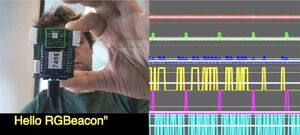
Interface and Application Programming
"Connecting your embedded devices to the internet can have some real benefits. One thing that always remains a nuisance is to find your device on the world wide web of connected computers by determining it’s IP address. To obtain the IP address, a user must often resort to having a display or opening up another communication channel to your device, typically a serial connection. I have this problem quite often when students have to connect a large number of devices simultaneously in a classroom setting. This made me start looking for an answer to the following question: How can I communicate a device’s IP address or other unique identifier to an end-user? The solution should be: - cheap - easy to use - without access to the connected router’s DHCP table - speed isn’t an issue for now." [...]

Super Accurate Thermometer
"A really accurate temperature display using the BME280 sensor and LCD screen. This project is a very accurate thermometer that uses the BME280 temperature. I decided to make this project to iterate on a tutorial I found, which uses the lm35 temperature sensor. When the tutorial circuit was built, I noticed the temperature was very unprecise, and I was suggested to iterate the project, with a more accurate sensor like the BME280. It uses the BME280 sensor to get a temperature reading (in celsius), then it constantly prints that value onto the LCD screen. Challenges - The BME280 sensor is much more complex and has lots more functions than the lm35, so just to get it working took multiple hours." [...]
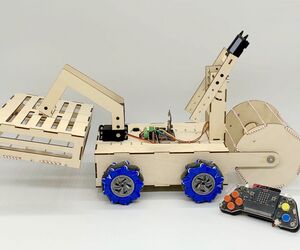
Ping-pong Balls Collector - HuskyLens AI Robotic Ball Picker
"This is an autonomous AI ball-picking robot based on HuskyLens AI camera. Background I made a radio-controlled "robotic ball picker" last time and it performed well. This time I want it smarter. So here comes the idea of making an autonomous AI ball-picking robot! Without further ado, let's start! Function I add functions of AI auto-recognition, tracking and picking up ping pong balls to the original remote control." [...]

Building a DIY Stream Deck (Mini Macro Keyboard)
"I’ve been doing a little streaming on Twitch, and a lot of streamers I follow have something called an Elgato Stream Deck. The Stream Deck is a small device with 15 buttons, each of which has its own customizable RGB icon. By configuring the bundled software, users can set button icons and macros to control your casting software, send messages in the stream chat, launch programs, and much much more. Unfortunately the Stream Deck is out of my price range, at a whopping $149.99 retail. Fortunately I think I can make something that replicates the basic functionality for a fraction of that price: what I’m calling a “Stream Cheap”. Although I’m focusing on using this as a replacement for a Stream Deck, at heart this is really a custom macro keyboard." [...]
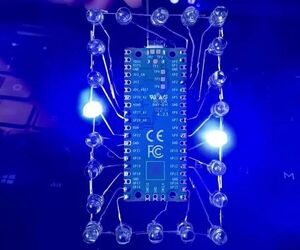
Raspberry Pi Pico LED Badge
"This project involves soldering. If you have little or no experience with soldering, make sure you have someone you trust walking you through the project. Always be in a properly ventilated environment when soldering, as it may release toxic fumes into the air. Supplies What you'll need: - Raspberry Pi Pico - About 30 LEDs, any color - A piece of cardboard, it doesn't have to be pretty as we are just using it as a template - Power source, you can also just use the Micro USB cable and a battery pack Tools you'll need: - Soldering Iron + Solder - Pencil - Micro USB cable - A computer for programming the Pico - (Prefered) A helping hands device for holding LEDs to solder" [...]
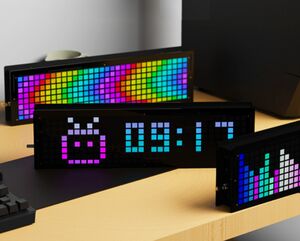
ESP8266 Wi-Fi Based 7-Segment Display Clock
"A mini but fully featured clock, with RGB effects and temperature monitoring function. Get hands on the PCB prototypes now. Supplies: 1) Nodemcu (ESP8266) 2) Custom PCB 3) Dash PCB 4) Connecting wires 5) Battery 5v Hello guys, I made want to make a 7-segment display. But this time with bigger digits and RGB effects. Because this can be used to display some readings like Clock with Nodemcu, temperature monitoring using Arduino. Also, with an option of color changing after each second or next reading." [...]

Portable Air Quality Monitoring Station Based on ESP8266
"Portable Air Quality Monitoring Station Based on ESP8266 - AiryFi #Arduino @Arduino Air is the substance we inhale. It's around 78 percent nitrogen, 21% oxygen, and 1% argon, plus various 'other' bits and pieces, many of which have been blasted out by people and their associated gear. Although carbon dioxide is an apparent pollutant that contributes to climate change, there are other factors to consider for human health, such as particulate matter. This is only very minute particles such as soot and smog. They're divided into two categories based on particle size: those less than 2.5 microns in diameter (PM2.5) and those between 10 and 2.5 microns in width (PM10). Respiratory sickness, heart disease, and lung cancer have all been related to this pollution." [...]

OpenTama: an open source reference design for MCUGotchi !
"Last year, I introduced MCUGotchi, a Tamagotchi P1 emulator for microcontrollers, that worked on an STM32F0 development board. Today, I am pleased to announce the support of a new board in MCUGotchi: OpenTama ! OpenTama is an open source development board created by Sparkr, the company I co-founded. It has been specifically designed for MCUGotchi using KiCad and has everything a virtual pet needs, and even more, in a small and nice form factor. It features: - a low-power STM32L072CBT MCU - either a backlit 128x64 LCD UC1701x or a 128x64 OLED SSD1306 display - an RGB LED for notifications - a piezoelectric speaker - a 1000mAh battery - a USB C connector for data and charging - three buttons Being an open source hardware design, anyone can manufacture his/her own board. Furthermore, all components have been placed on the top side of the board, so that the assembly as well can be performed by EMS such as JLCPCB, even for small quantities (references for the various parts are included in the project)." [...]

12V Battery Capacity Tester
"Measuring the capacity of a battery As a boat owner, I always wanted to know the capacity of a used battery. Not the charge state, not the internal resistance, but how many Ampere-hours the battery can actually contain. A partially worn-out battery can obviously contain less than the rated Ah. The standardized way to rate a new battery is Ah = 20 * (the current that the battery can be loaded by for 20 hours). So to measure it, load the fully charged battery with 1/20 of the rated Ah (keeping the current constant while the voltage decreases), then measure the time until the voltage is below the threshold, typically 10.5V for a 12V battery. If it turns out to be 20 hours, you are happy to have a fresh battery; if it is, say, 10 hours, then the battery has lost half it's capacity." [...]
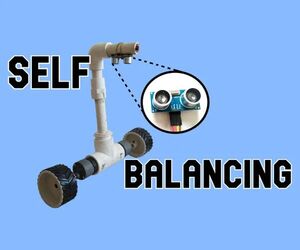
Arduino Two Wheel Robot
"This is a wheeled self-balancing robot. Powered by Arduino UNO and balanced by ultrasonic sensor. It is able to balance itself vertically. Supplies: - Arduino Uno x1 - Geared DC motor with Wheels x2 - L293D Motor Driver IC x1 - Ultrasonic Sensor (HC SR-04) x1 - Power Supply x1 - PVC Pipes 1 meter - PVC T-Joint x1 - PVC Elbow Joint x1 - Breadboard x1 - Connecting Wires" [...]

Radar with LiDAR sensor
"A radar built using Power-KI, Arduino and LIDAR-Lite sensor. This project is built with: Power-KI, an Arduino Uno, a Servo motor and the LIDAR-Lite sensor. LIDAR-Lite is a compactoptical distant measurement sensor, in this project it's connected to the Arduino with I2C. Getting started 1. Install "LIDARLite Arduino Library" and "Servo Arduino Library" in your Arduino IDE by going to Sketch->Include library->Add library from ZIP file. 2." [...]
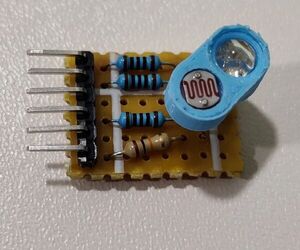
LDR Color Sensor
"With the intention of building a cheap and simple color sensor to do projects with our students, we found an idea that seemed to allow us to do this with a simple LDR photoresistor and an RGB LED. Let's see how we combine both components and use it with micro:bit to build a simple color ball sorting machine. The key to the operation of the color sensor is that applying for example a red light to a red object will reflect a higher intensity of light than if we apply green or blue light to the same red object. So we put the photoresistor next to the LED and emit a series of colored pulses from the latter. Reading the analogue value obtained in the photoresistor for each color pulse, we should be able to perceive differences depending on the color of the object we put in front of it, which should allow us to differentiate colors (second picture). It will not be a very accurate sensor, but well calibrated it can be useful in many situations." [...]

BCD Watch (Binary to Decimal)
"What is BCD? The full form of BCD is binary coded decimal, as its name the binary digits is showing decimal value. It is a very simple representation of decimal numbers in different ways, so you can google BCD or binary coded decimal on google. Why did I make this? I want to make a watch which has led, so instead of a simple watch I came with a unique idea. In my engineering I have learned about binary coded decimals, I think some schools also teach this." [...]

DIY Arduino Voice Controlled Robot
"Motions can be controlled by the user by giving specific voice commands. Some time ago I introduced you to an Arduino Robot that had the ability to track an object moving in front of it. This time I used the same robot, but now I have added a Bluetooth controller so that now motions can be controlled by the user by giving specific voice commands. The speech is received and processed on a Smartphone which then sends commands to the Robot. A few years ago I made a similar project that uses the same Android application, which is a home automation system and you can see it on: https://www.youtube.com/watch?v=IOYRwkNQz0w&t=8s. The name of the Android application is "BT Voice Control for Arduino" and you can download it for free on the Google Play services." [...]

PICO-Chord-keyboard
"Designs and software for a chord keyboard controller. Created as the basis of an article for Hackspace magazine, issue 53. You can download the magazine here. The article is on page 68. You will need the following hardware items: Six keyswitches. The Kailh Mechanical Keyboard Switches work well." [...]
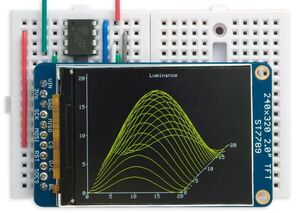
Tiny TFT Graphics Library 2
"This is a small graphics library, specifically aimed at ATtiny microcontrollers, for the variety of small colour TFT displays available at low cost from suppliers like Adafruit, AliExpress, or Banggood. It's an updated version of my Tiny TFT Graphics Library. This latest version of the library supports both the classic ATtiny processors, such as the ATtiny85, and the new 0-series, 1-series, and 2-series ATtiny processors, such as the ATtiny402. Like the original library it allows you to plot points, draw lines, draw filled rectangles, and plot characters and text with an optional scale factor, in 16-bit colour. This version adds the ability to plot outline rectanges, and outline and filled circles. I've included demo curve-plotting and histogram-plotting programs that adjust to fit any display." [...]
Secção Videos
Videos interessantes.
That's all Folks!



